The Best 10-Minute Workout To Maintain a Lean Body After 50
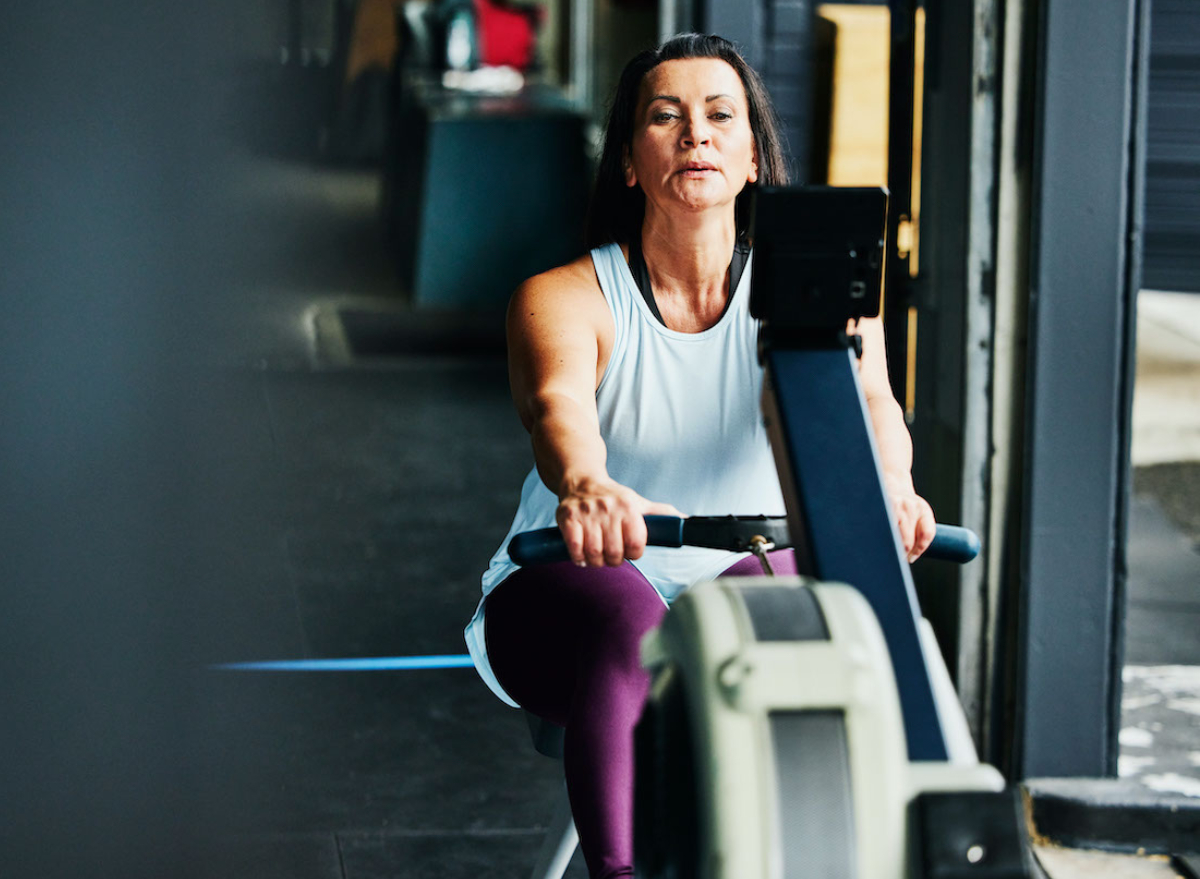
Staying lean is a challenge regardless of your age. In an era of sedentary lifestyles and cheap, fast food, keeping up with your fitness and fighting off the ever-encroaching increase in body fat is no small task. As you pass your 50s and enter your golden years, the challenges grow even further. With the age-related loss in muscle mass, strength, and mobility accelerating as you approach 60, it is exceptionally challenging to stay lean. The good news is, we put together the best 10-minute workout to maintain a lean body after 50 that’ll get you on the right track.
When you keep up with your strength training and follow healthy diet and lifestyle habits, you can substantially delay and even reverse these age-related decreases in your fitness level, and also grow your muscles. The following is the ultimate 10-minute workout to maintain a lean body after you pass 50. Perform two sets of 15 repetitions per exercise, and rest for 60 seconds between sets. If you have extra time, you can perform three to four sets. In either case, be sure to complete the workout at least three times per week for optimal results.
Keep reading to learn all about this productive workout, and next, don’t miss the 9 Best Exercises for a Slim & Slender Body in 30 Days.
Squats

Squats help preserve your ability to go from seated to standing positions while strengthening your quadriceps, hamstrings, glutes, and core muscles and improving muscle tone in those areas.
To perform a squat, stand with your feet shoulder-width apart, toes pointing slightly outward. Keep your chest lifted, engage your core, and maintain a neutral spine. Lower your body by bending at the hips and knees, keeping your weight in your heels and pushing your hips back. Once your thighs are parallel to the ground, push through your feet to return to the starting position. Repeat for the target repetitions.
Seated Rows
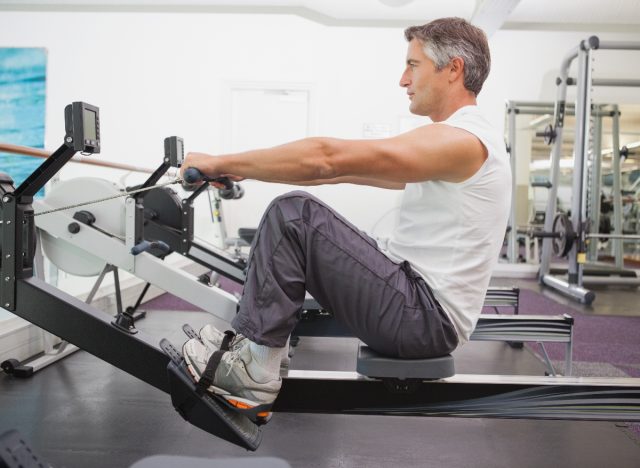
Seated rows keep your upper back strong, build muscle in your lats, rhomboids, traps, and biceps, and also promote good posture. These are great for maintaining your ability to manipulate objects during day-to-day activities.
To perform a seated row, sit on a bench or the floor with your legs extended and a cable machine in front of you, fitted with a parallel handle setup. Grasp the handles with a neutral grip, arms extended, and palms facing each other. Engage your core, lean back slightly, and maintain a tall posture. Pull the handles toward your chest, retracting your shoulder blades and squeezing them together as if crushing a piece of fruit in your armpits. Avoid shrugging throughout the range of motion. Slowly return to the starting position, and repeat for the target repetitions.
Reverse Lunges
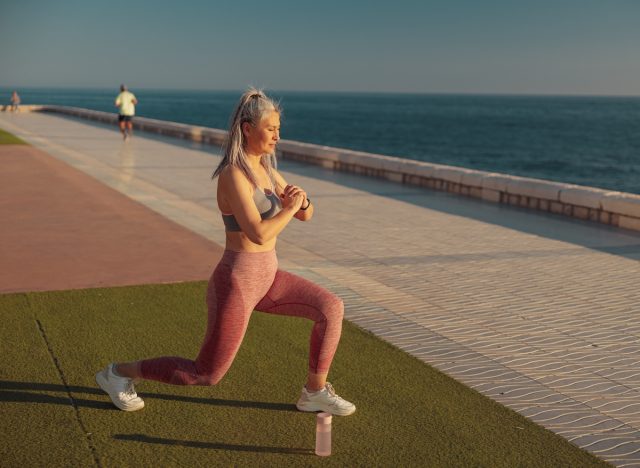
Lunges are great for maintaining gait abilities, such as walking, running, and stair climbing. Reverse lunges are a low-impact variation that minimizes strain on your front knee while working your quadriceps, hamstrings, and glutes.
To perform a reverse lunge, stand tall with your feet hip-width apart and your hands on your hips or at your sides. Step your right foot back, lowering your body by bending your knees, keeping your left knee above your left ankle. As you lower your right knee to the floor, rotate your right foot inward slightly for optimal biomechanics. Push through your left foot to return to the starting position. Repeat for target repetitions, then switch legs.
Standing Shoulder Presses
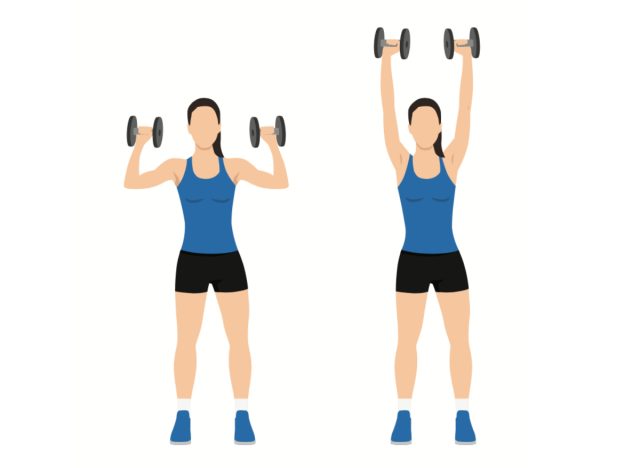
Reaching for objects on high shelves, doing home improvement, and other day-to-day tasks depend on your ability to reach your arms overhead while maintaining strength. Standing shoulder presses are a compound exercise that maintains this ability while beefing up the deltoids and triceps. Dumbbell shoulder presses are forgiving on the shoulder joint. Use a parallel grip with your palms facing each other if you tend to struggle with shoulder issues.
To perform a standing shoulder press, stand with your feet shoulder-width apart, holding dumbbells at shoulder level with your palms facing forward or inward. Engage your core, and maintain a tall posture with a slight knee bend. Press the dumbbells overhead until your arms are fully extended, without shrugging your shoulders. Slowly lower the dumbbells back to the starting position, maintaining control and stability throughout the movement. Repeat for the target repetitions.
Glute Bridges
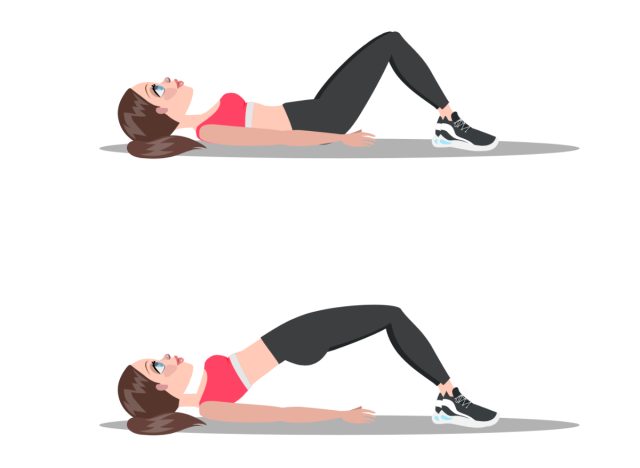
Glute bridges are a simple but effective way to strengthen your glutes and hamstrings. They are generally included in many lower back pain prevention routines and also help maintain muscle mass on your posterior chain. You can position a weight on your lap for added resistance.
To perform a glute bridge, lie on your back with your knees bent, your feet flat on the floor hip-width apart, and your arms by your sides. Engage your abs by drawing your lower rib toward your pelvis, maintaining a neutral spine. Push through your heels, and lift your hips off the ground, squeezing your glutes at the top of the movement. Slowly lower your hips back down to the ground, maintaining control and engagement in your core and glutes. Squeeze the end range for about one second. Lower back down to the ground, and repeat for the target repetitions.
Lat Pulldowns
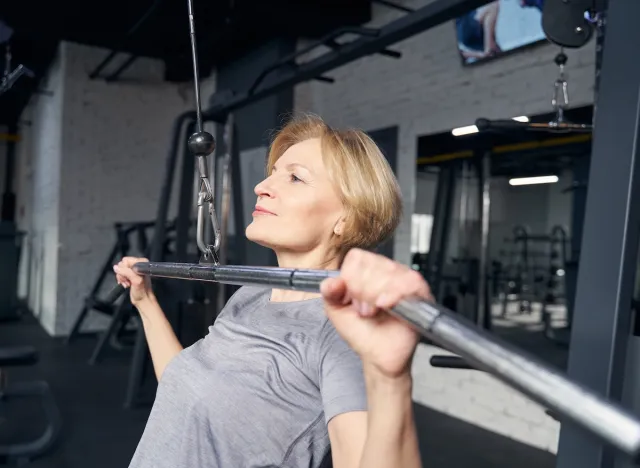
The last exercise in our 10-minute workout to maintain a lean body as you age is the lat pulldown. This move strengthens your upper back and helps maintain muscle mass in your torso. It’s also important to maintain strength in this range of motion for many day-to-day activities, such as closing the trunk of a car, cleaning/wiping surfaces overhead, and other overhead-reaching activities.
To perform a lat pulldown, sit at a lat pulldown machine with your feet flat on the floor and your knees positioned under the padded supports. Grasp the bar with an overhand grip, hands wider than shoulder-width apart. Engage your core, and maintain a tall posture with a slight arch in your lower back. Pull the bar down toward your chest, retracting your shoulder blades and squeezing them together at the bottom of the motion. Avoid shrugging throughout the range of motion. Slowly return the bar to the starting position, maintaining control and engagement in your upper back muscles. Repeat for the target repetitions.









